Katie Byerly shares photos of more than 20 plants flowering in northern Iowa’s lovely Rock Creek Wildlife Area. Katie is also known as Iowa Prairie Girl on YouTube.
Last week I was fortunate to have time off on a beautiful, sunny day with temperatures in the low 80s. So on June 29, I loaded up my two yellow labradors, Prairie Dog and Meadow, and headed to the Rock Creek Wildlife Area five miles south of Osage (Mitchell County).
I was introduced to the Rock Creek area last summer while attending a Master Conservationist Course sponsored by the Iowa State University Extension Office. The mycountyparks.com website describes the area as 160 acres of wetland, restored prairie, upland and riparian forest with Rock Creek flowing through the central part of the area.
Be warned: after parking in a typical small county park parking lot, you have to cross Rock Creek by foot. The two previous trips I had made to Rock Creek the water was ankle deep and there are large rocks you can maneuver on to avoid wet feet.
However, on this trip we found the water to be knee deep. I stood there in the forest next to the flowing water, swatting mosquitoes, disappointed that I had driven 30 minutes to a prairie I wouldn’t get to see that day. Looking down at my hiking boots and then across to the shining prairie just a few feet beyond the creek, I decided the prairie was worth getting wet feet.
This beautiful restored prairie is surrounded by woods. It feels like a secret garden. The first wildflower that caught my attention was a tall, stout Indian plantain. I don’t normally find this plant in other north central Iowa prairies.
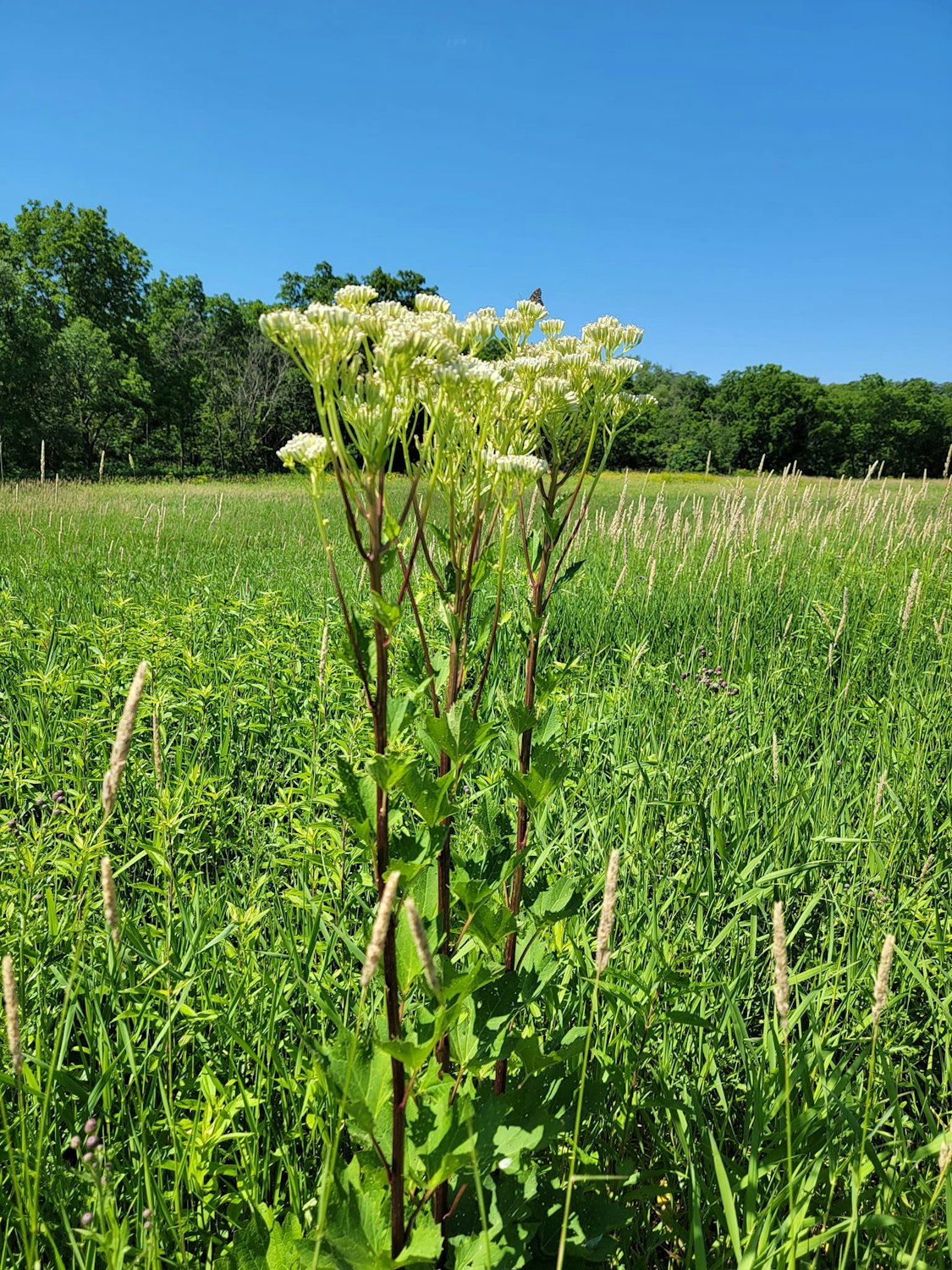
A closer look at the Indian plantain flowers:
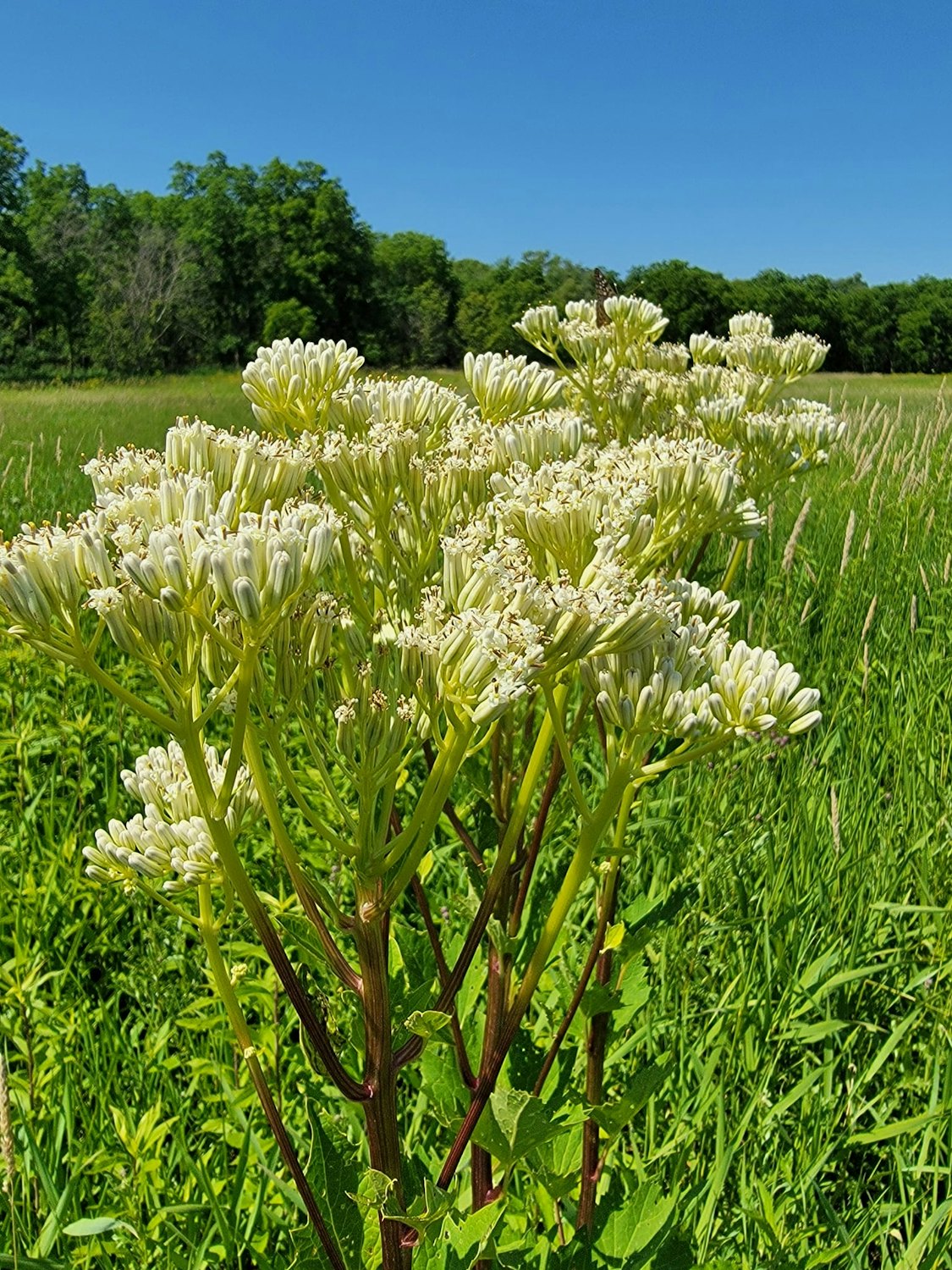
Moving on, I gravitate to one of my favorite wildflowers, wild white indigo. I love how they tower above other plants twisting in odd directions. I also love the beautiful pearly white pea pod like buds with the bluegreen waxy calyx.
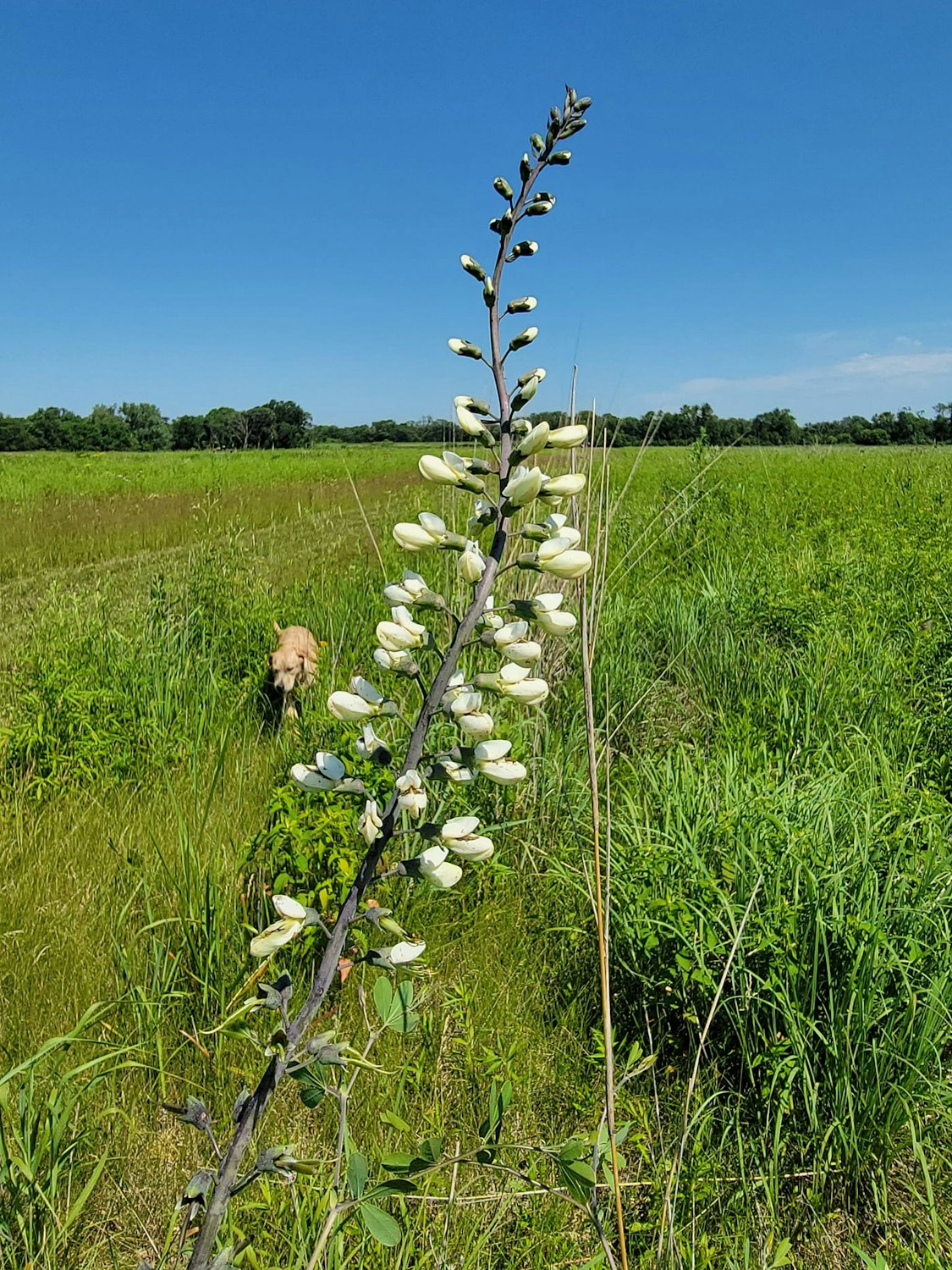
Next to the tall indigo plant I find a much shorter wildflower hiding in the grass. I didn’t recognize this one. My common practice when I find a flower that I am not familiar with is that I photograph all the parts of the plant to use as a reference when I am at home. This little hidden wildflower was difficult to photo. I was excited to learn that I had found a Clasping Bellwort, also known as Venus’ looking glass!
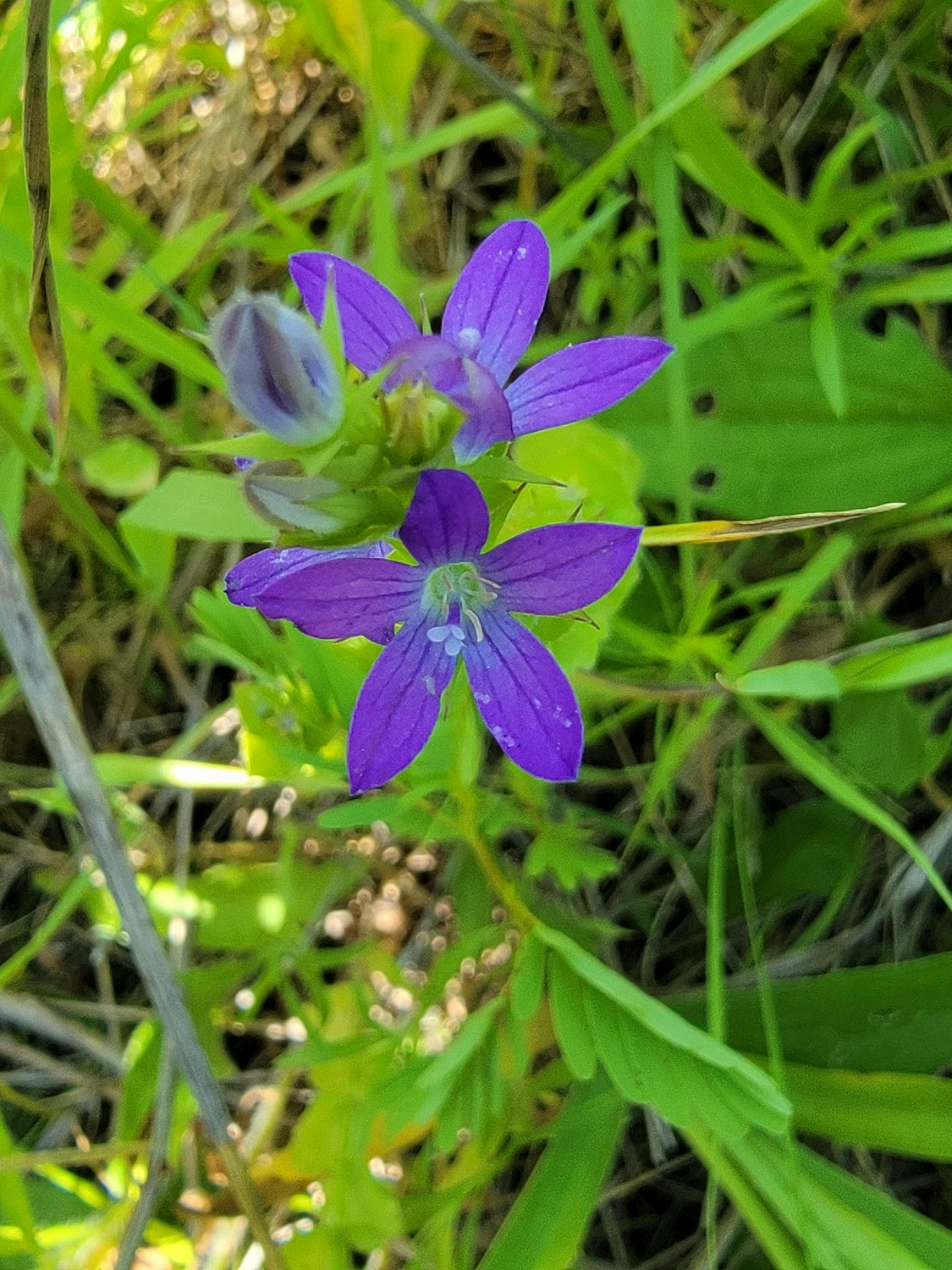
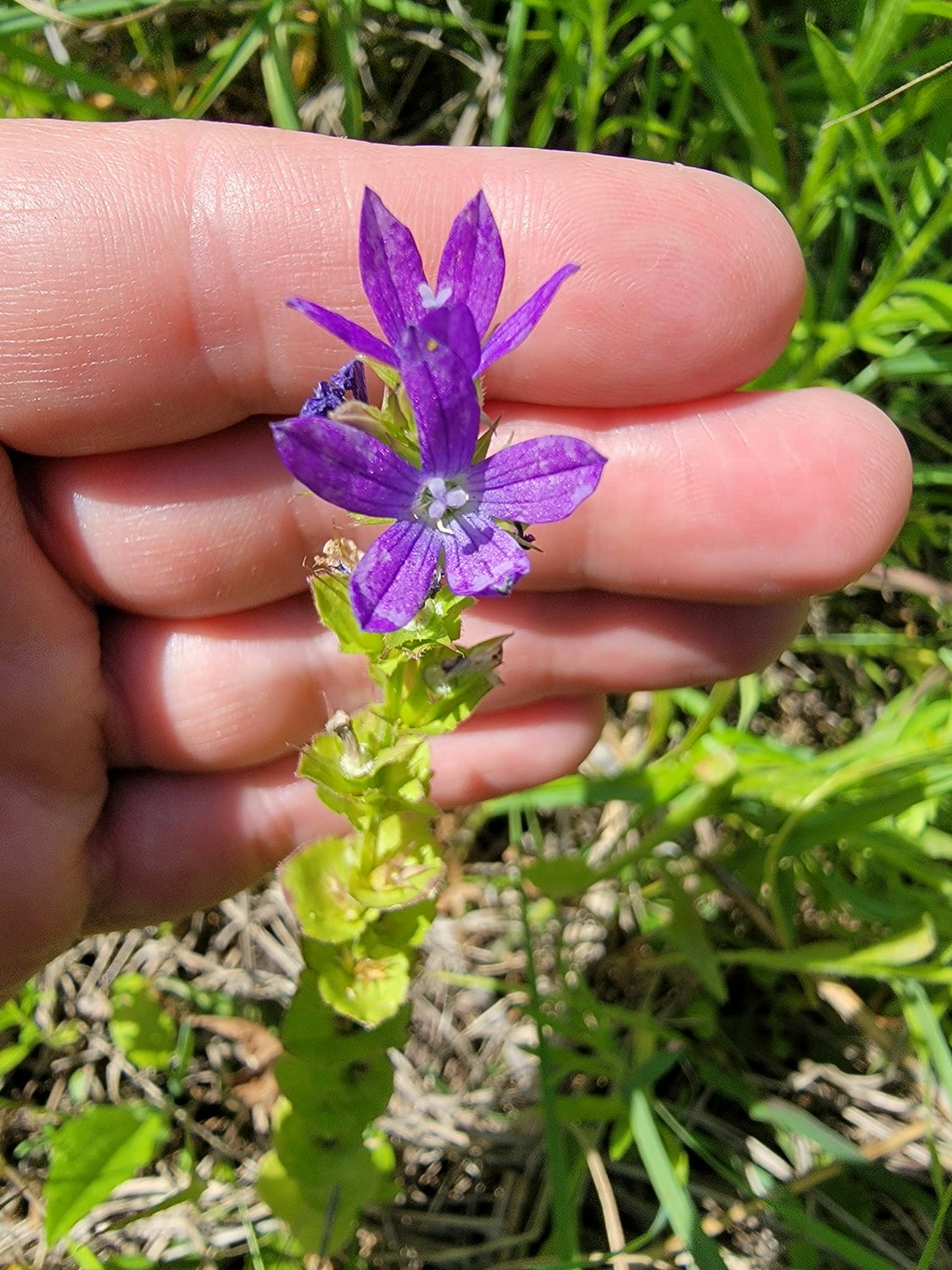
I love the clasping leaves on plants as you can see in this photo. I have a mental note of wildflowers on my “wish list to see.” I was able to check another one off from this prairie walk.
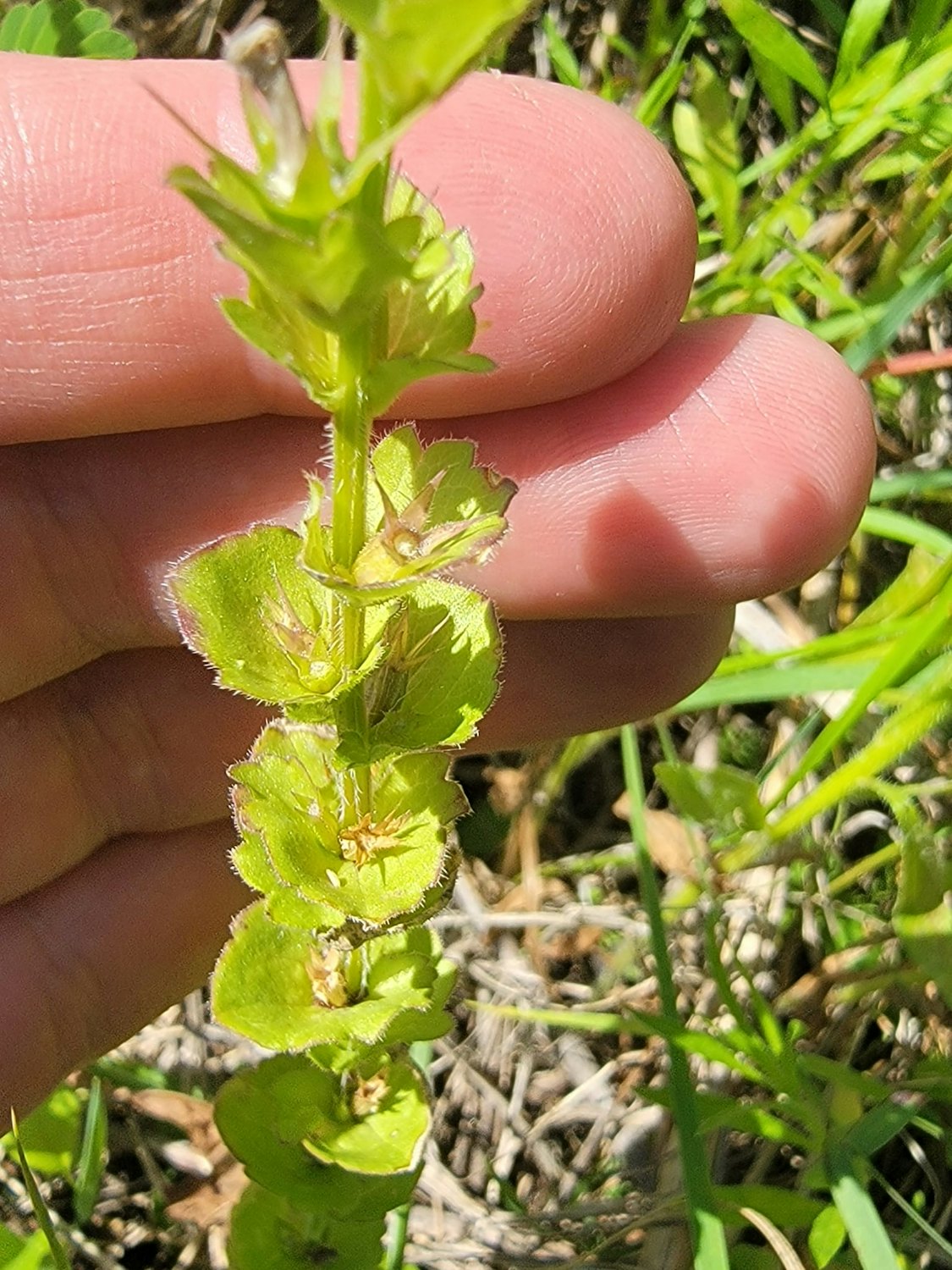
The Rock Creek Wildlife Area’s restored prairie is full of native plants, but like many natural areas, it is not immune from invasive species. I did a lot of arms above my head walking to avoid contact with wild parsnip. (The Iowa Department of Natural Resources warns, “If its oil touches the skin and then is exposed to sunlight, painful blisters will develop.”) Here is a photo of the native yarrow with the invasive wild parsnip.
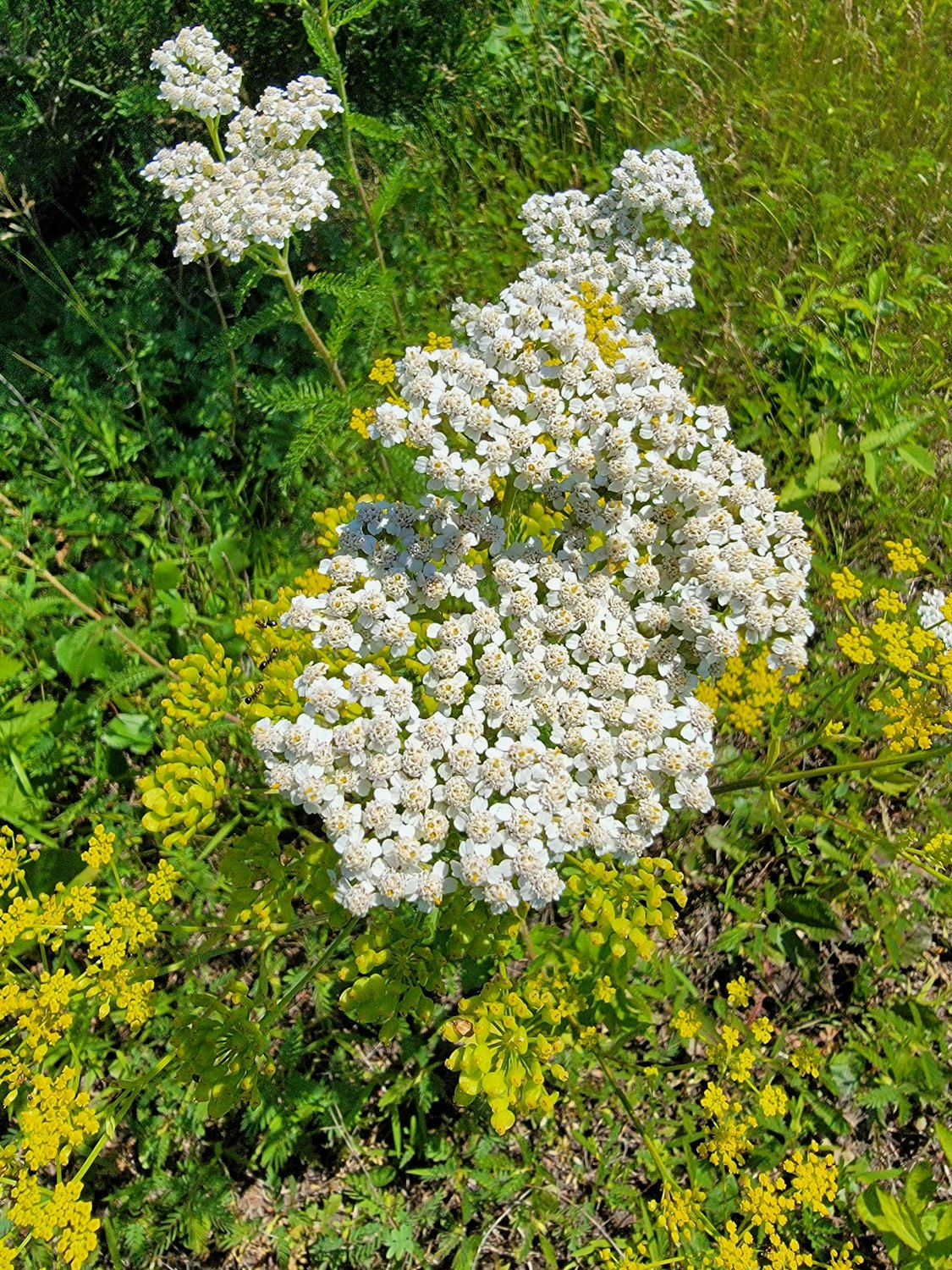
In many photos I combined plants. I consider white sage, also known as prairie sage, as the “accent plant” of the prairie. This image shows white sage in front of black-eyed Susans.
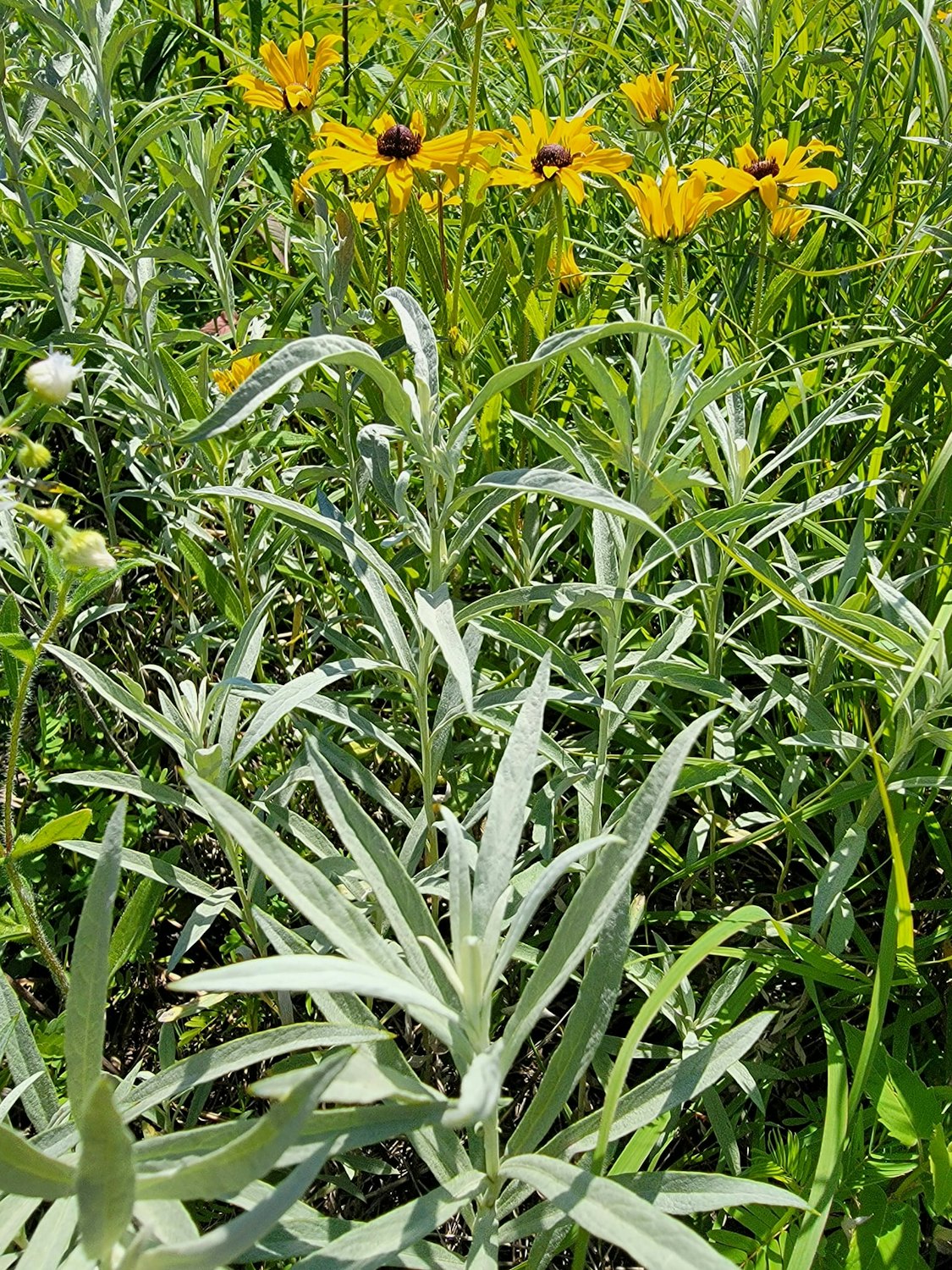
These black-eyed Susans are next to common milkweed.
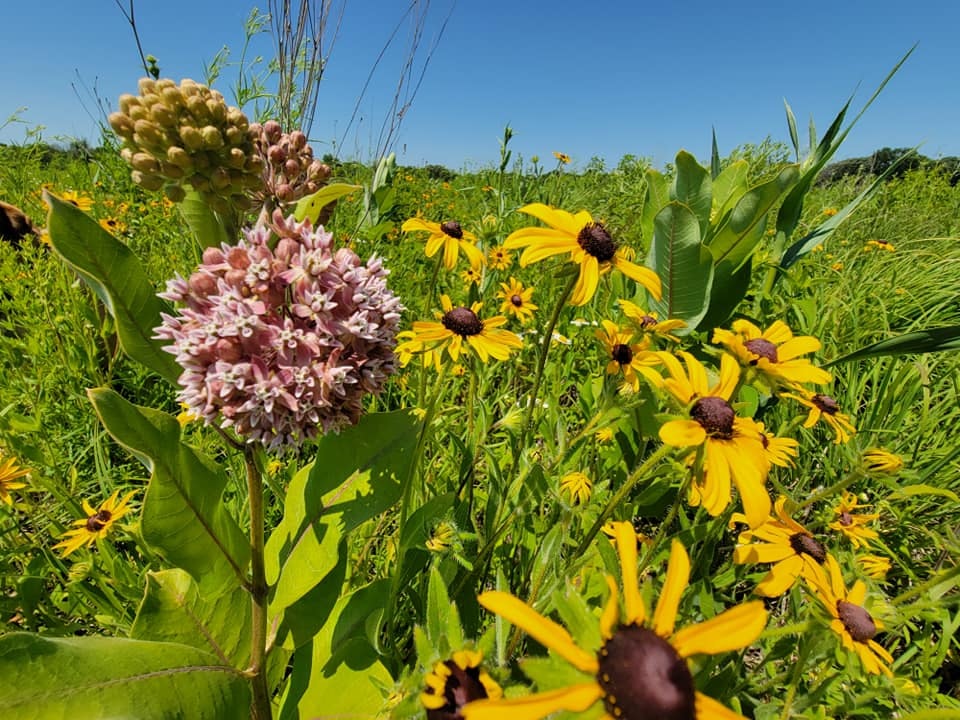
Rattlesnake master is prevalent at the Rock Creek Wildlife Area. I found this large plant with a unique twist to photograph (with black-eyed Susans in the background).
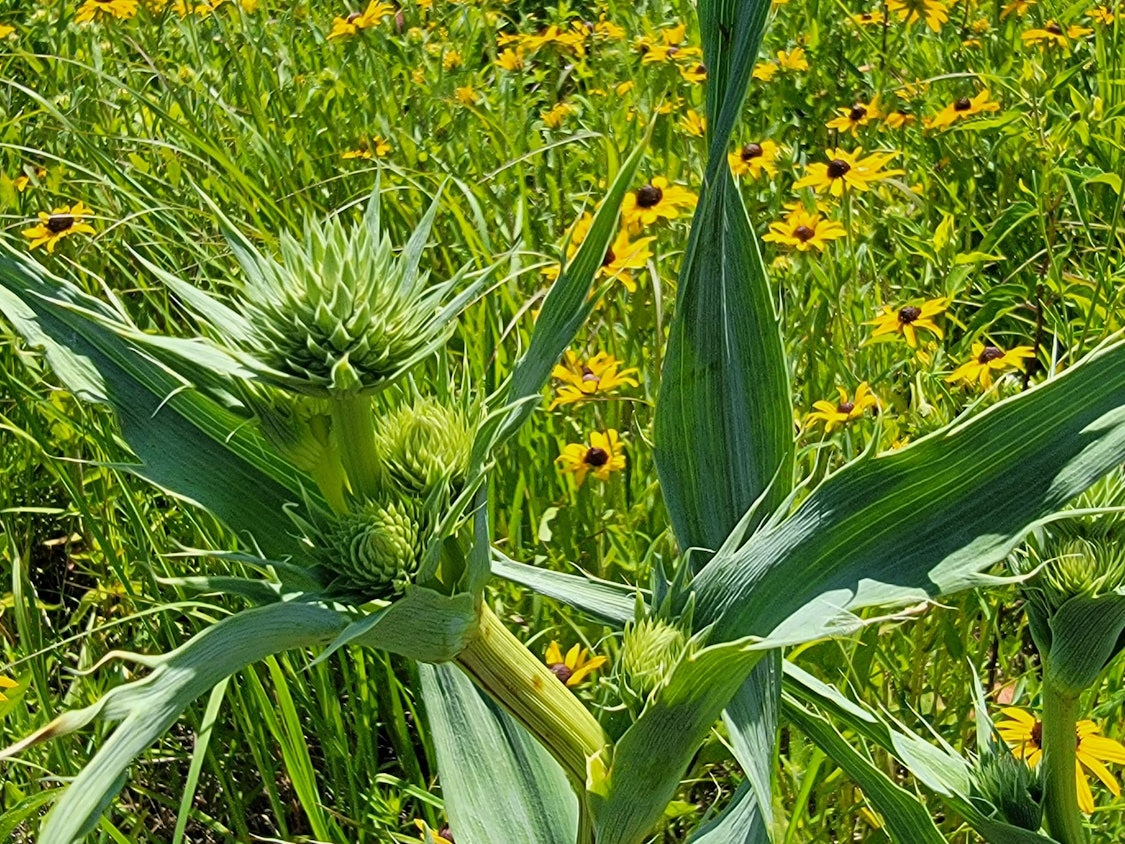
Butterfly milkweed (one of the few orange prairie wildflowers) and purple prairie clover grow in this prairie as well, but in smaller quantities.
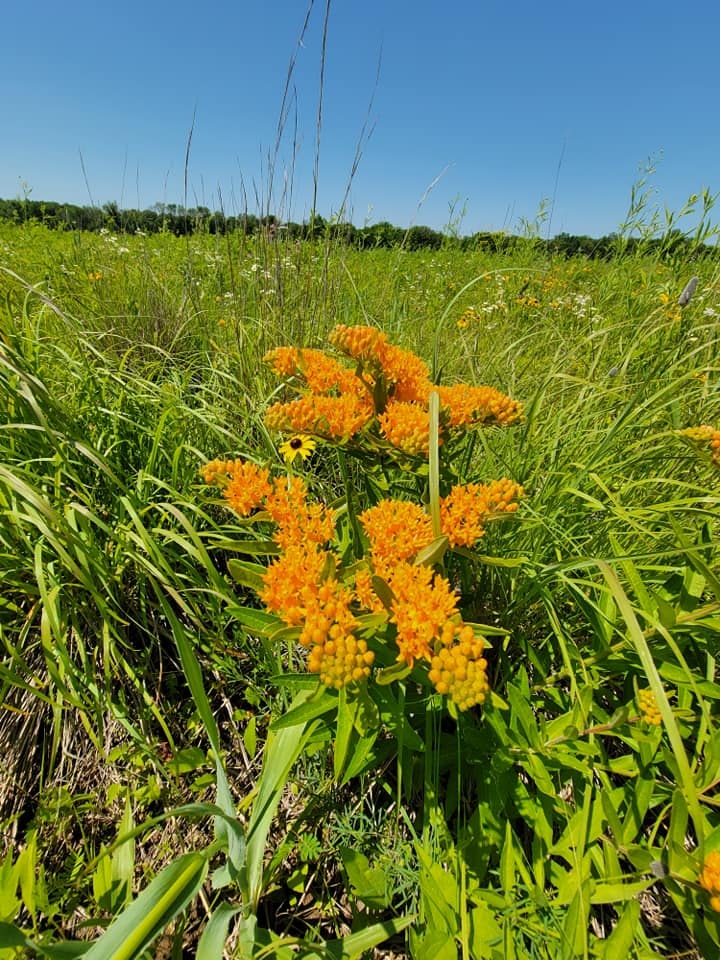
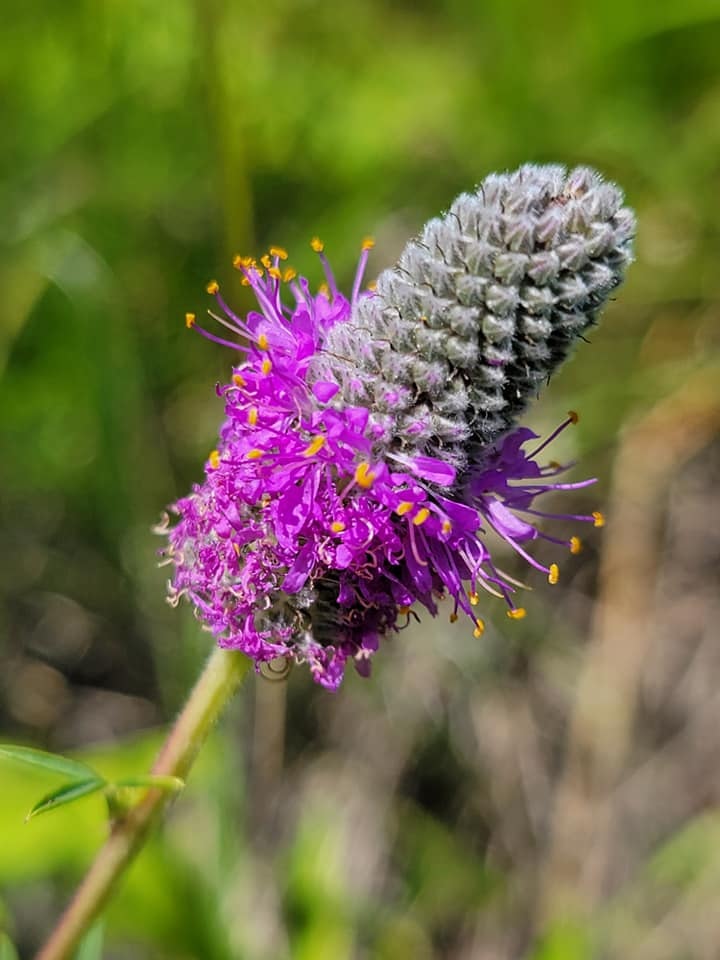
Patches of pale purple coneflowers are scattered throughout the prairie field.
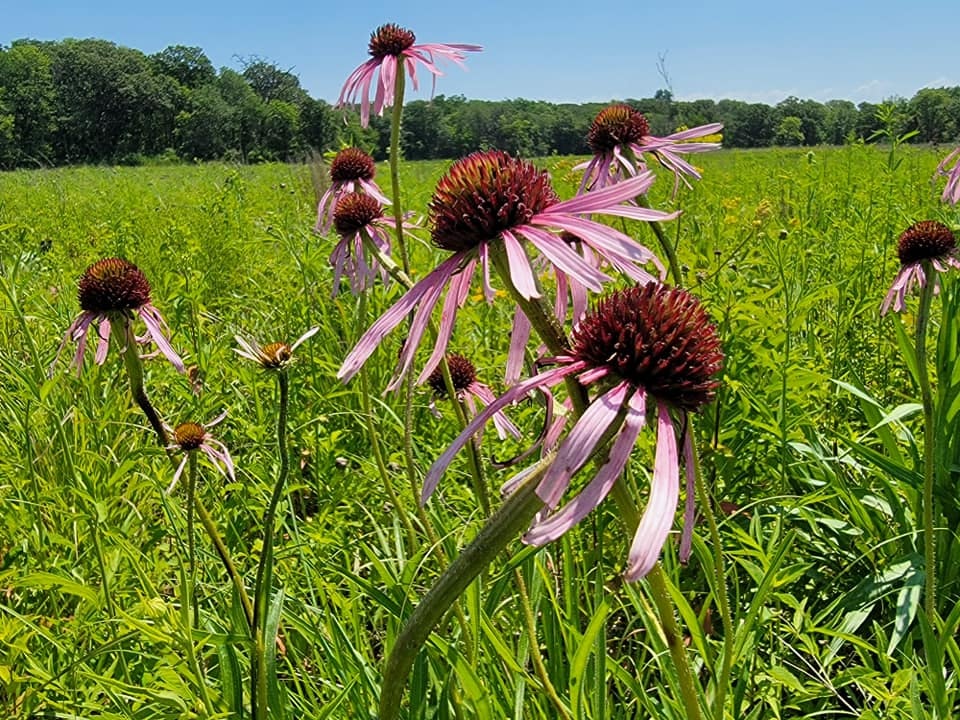
Another photo combination: pale purple coneflower with common milkweed.
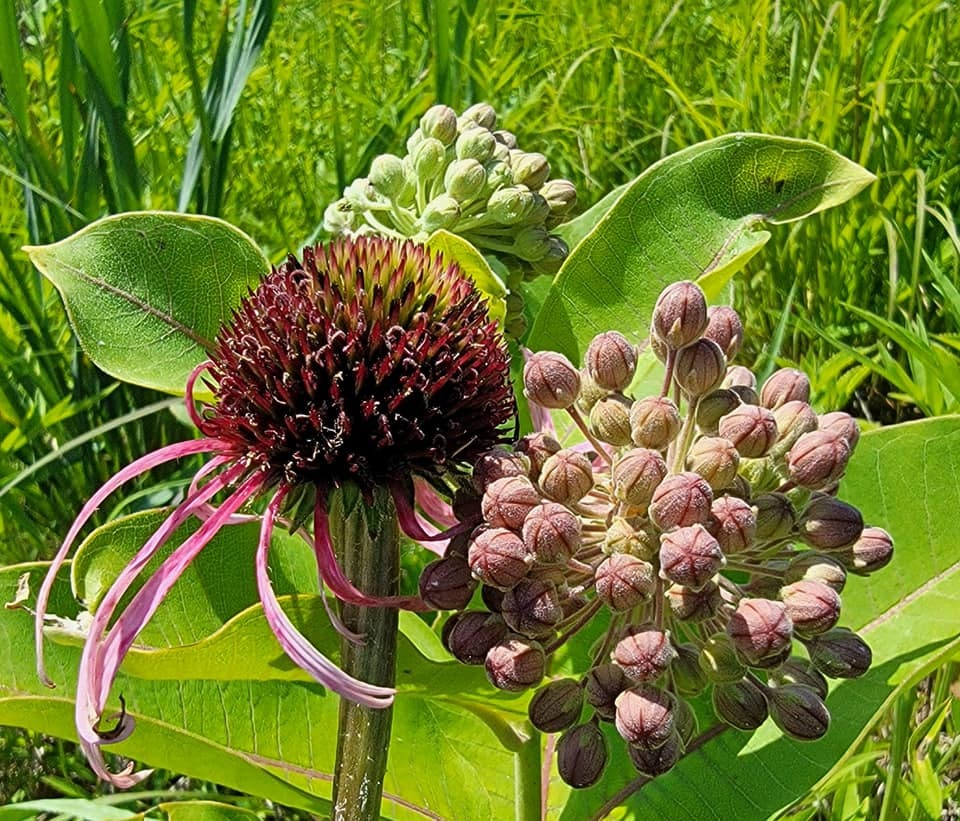
Along the creek and woods, I found hoary vervain standing tall and one lonely spiderwort. Here’s the hoary vervain:
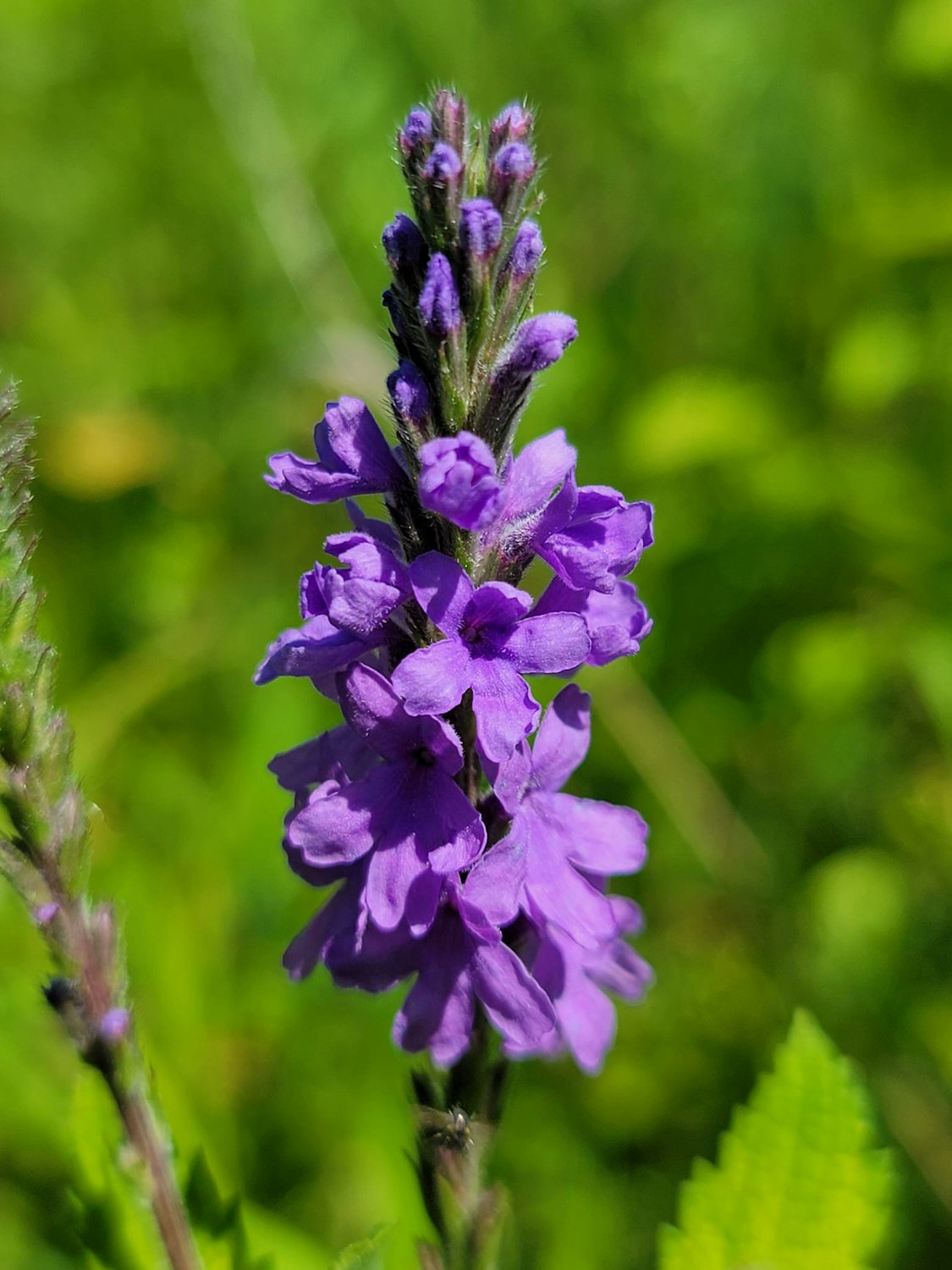
And the spiderwort:
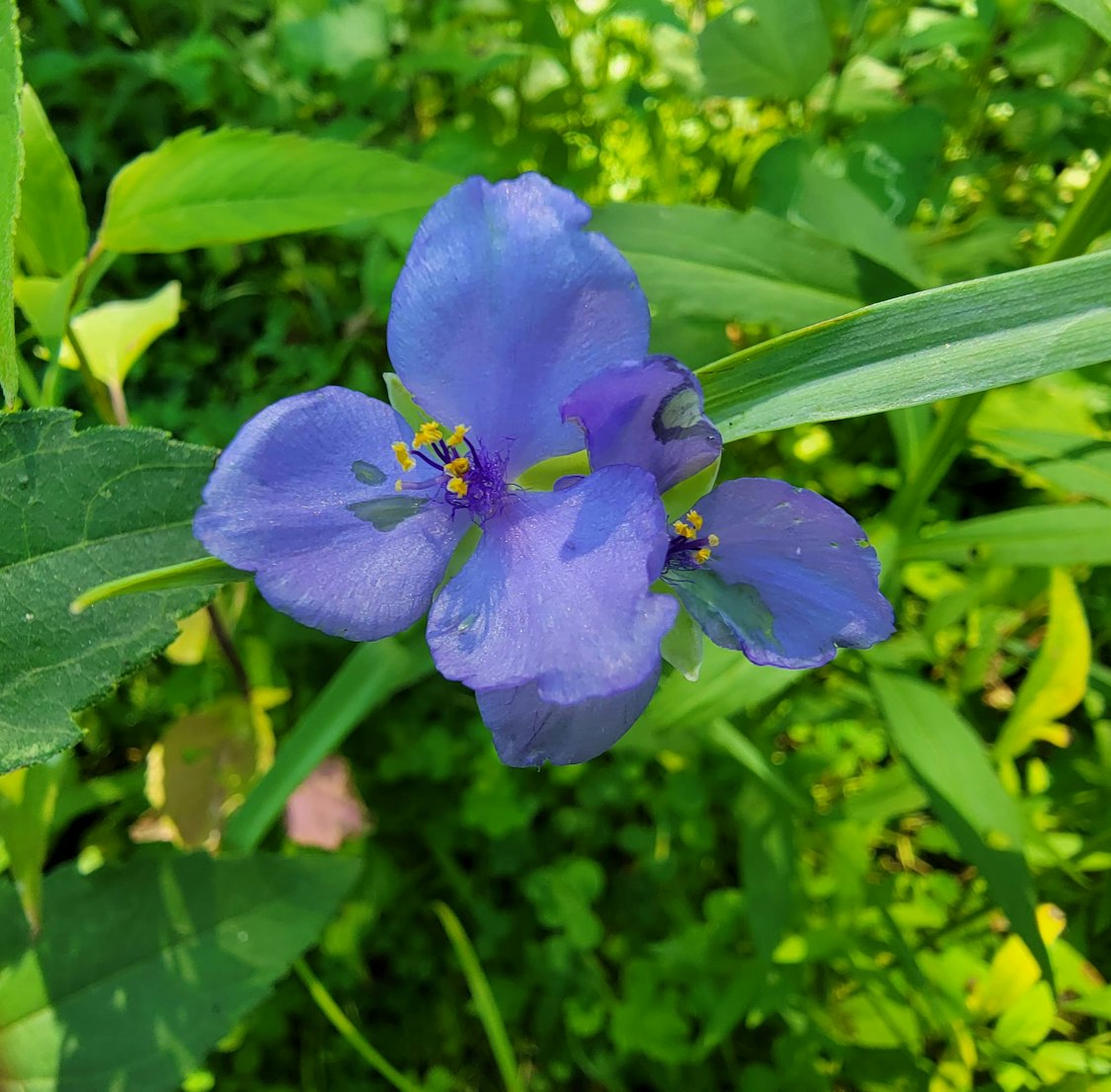
Dark green bulrushes and a solo Foxglove beardtongue were still blooming.
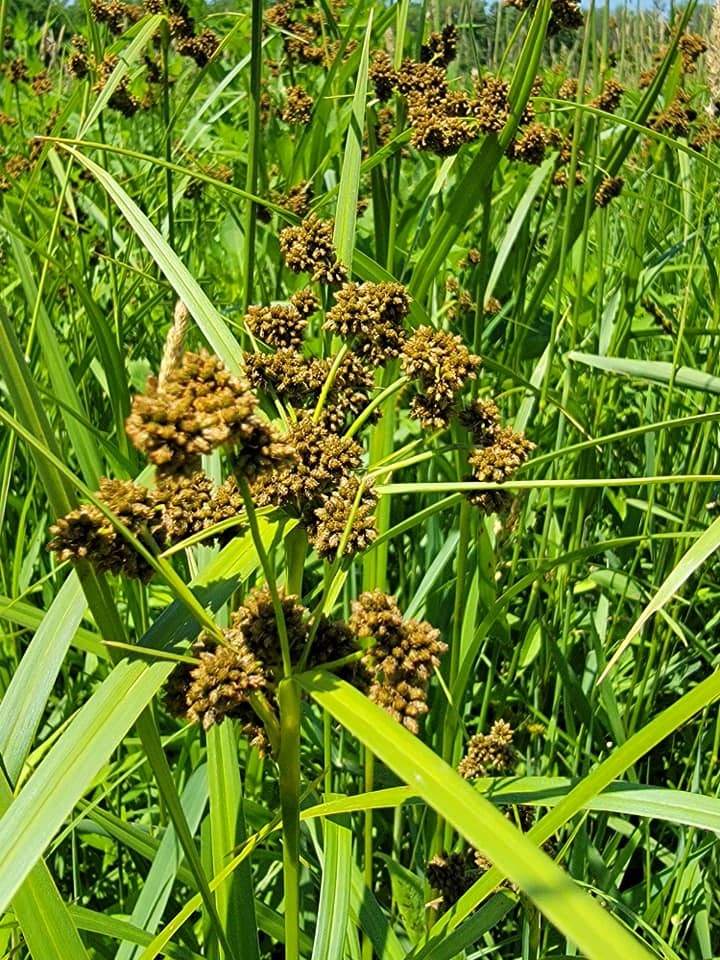
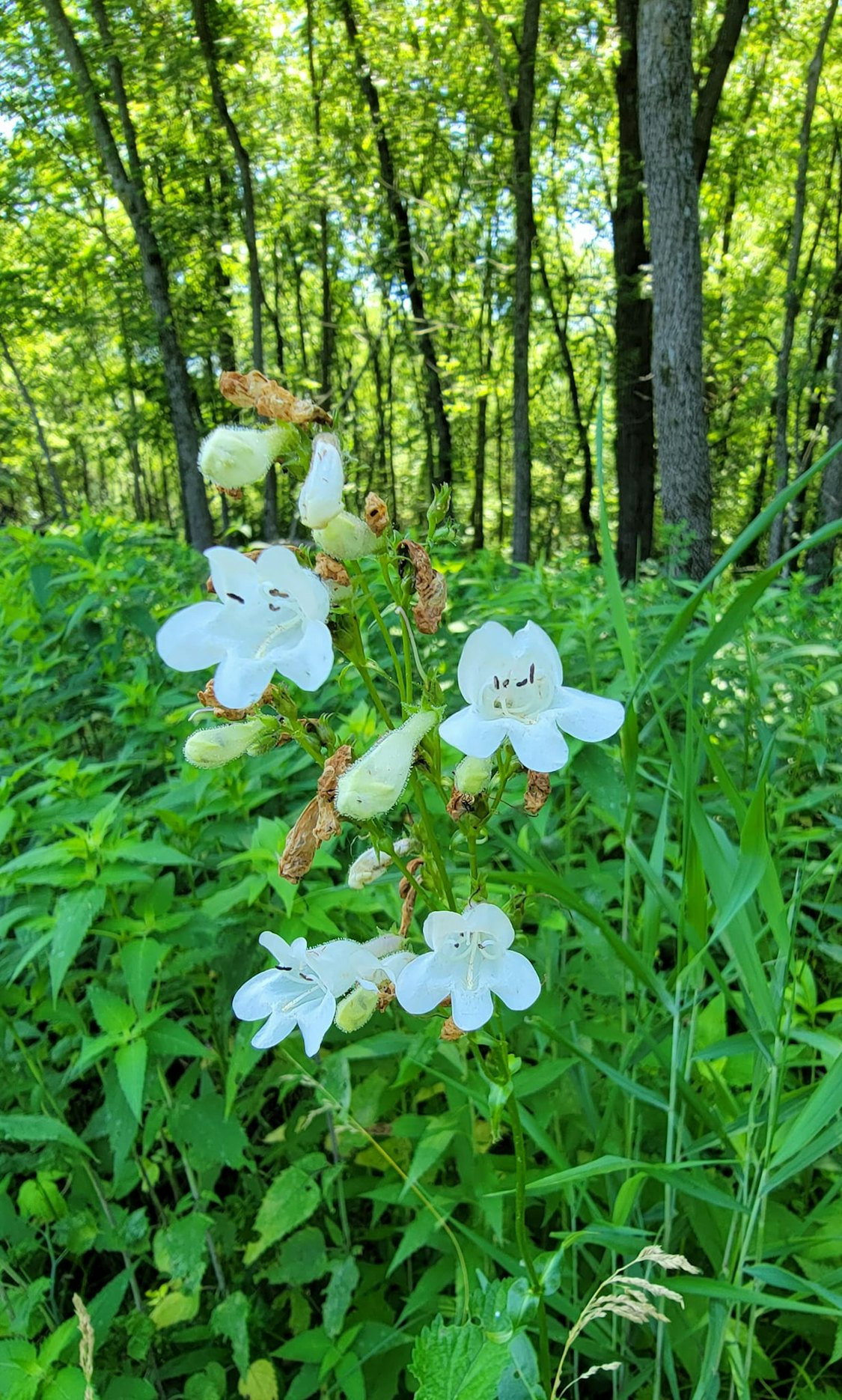
I find the plain little flowers of daisy fleabane fun to photograph. There is beauty in the simple things.
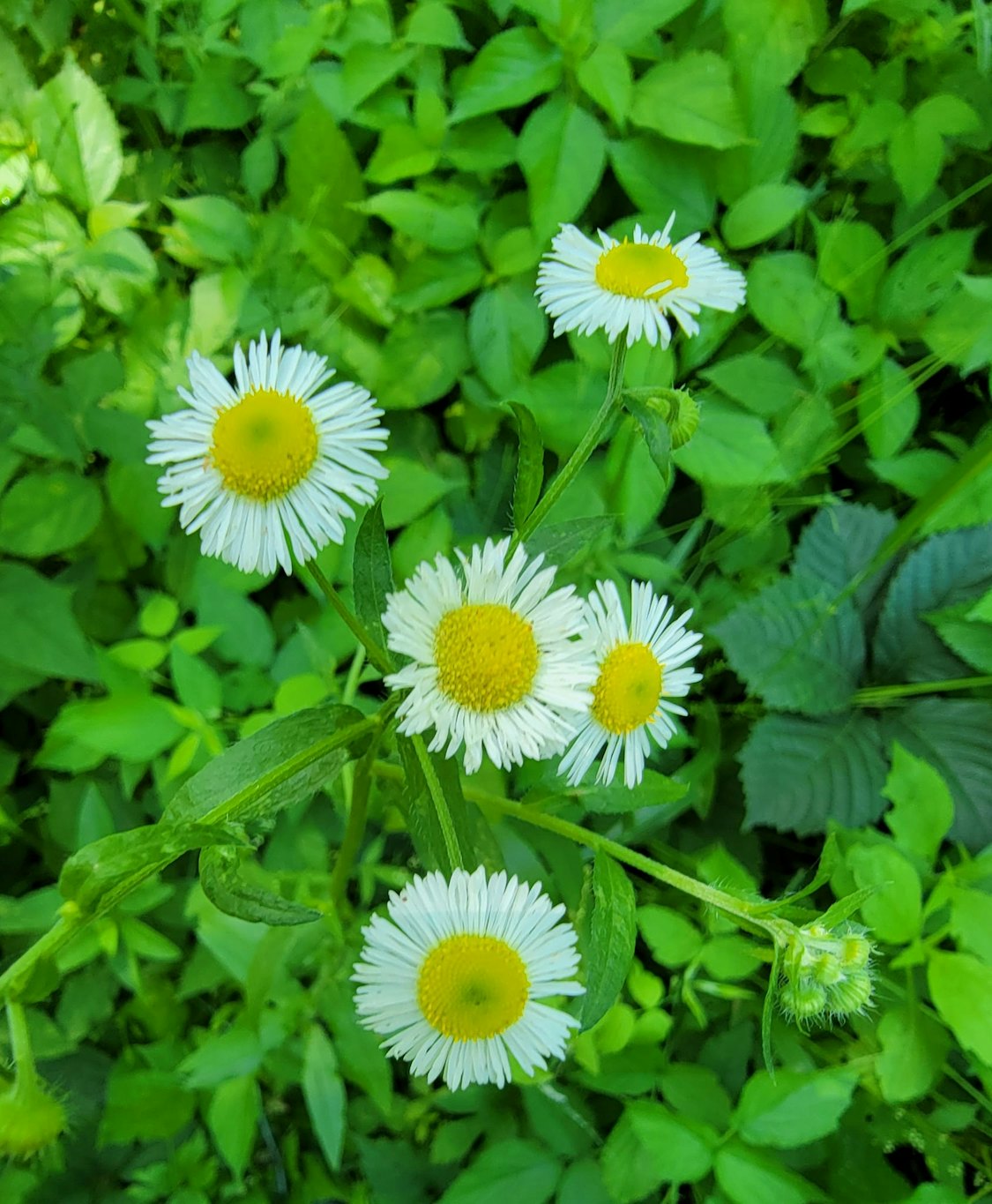
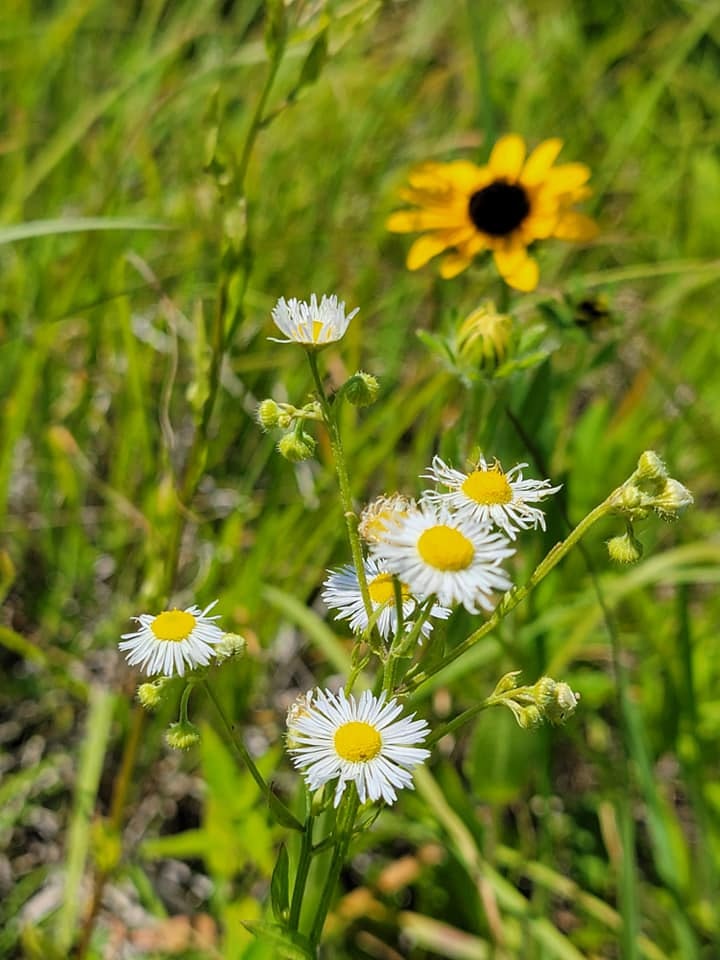
On the other hand, white avens are difficult to get a good picture of (especially with mosquitoes around your head). I was pleased with this close-up view.
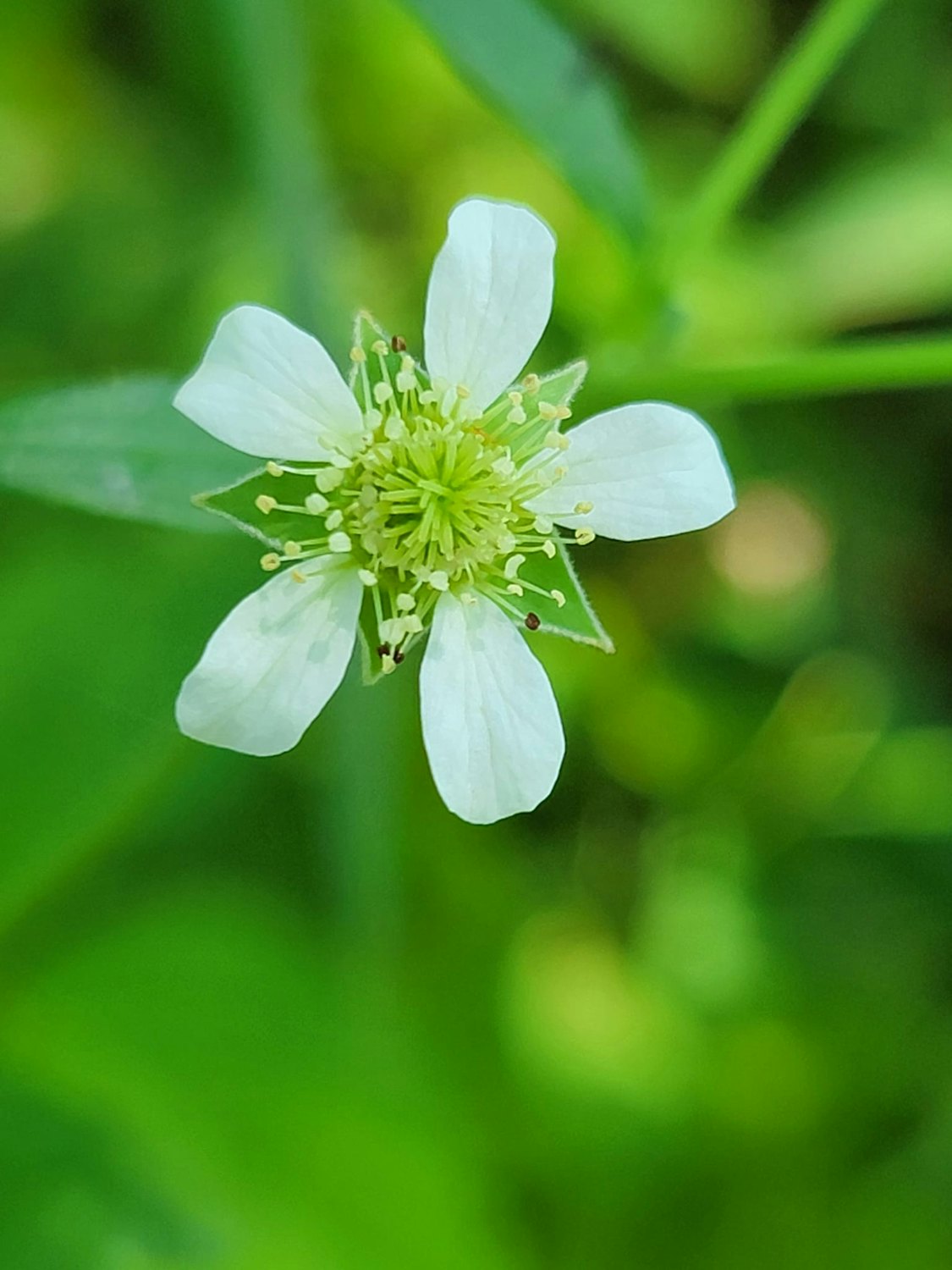
I was going to call this rough cinquefoil, also known as Norwegian cinquefoil, a non-native, but the Minnesota Wildflowers website lists it as a native plant.
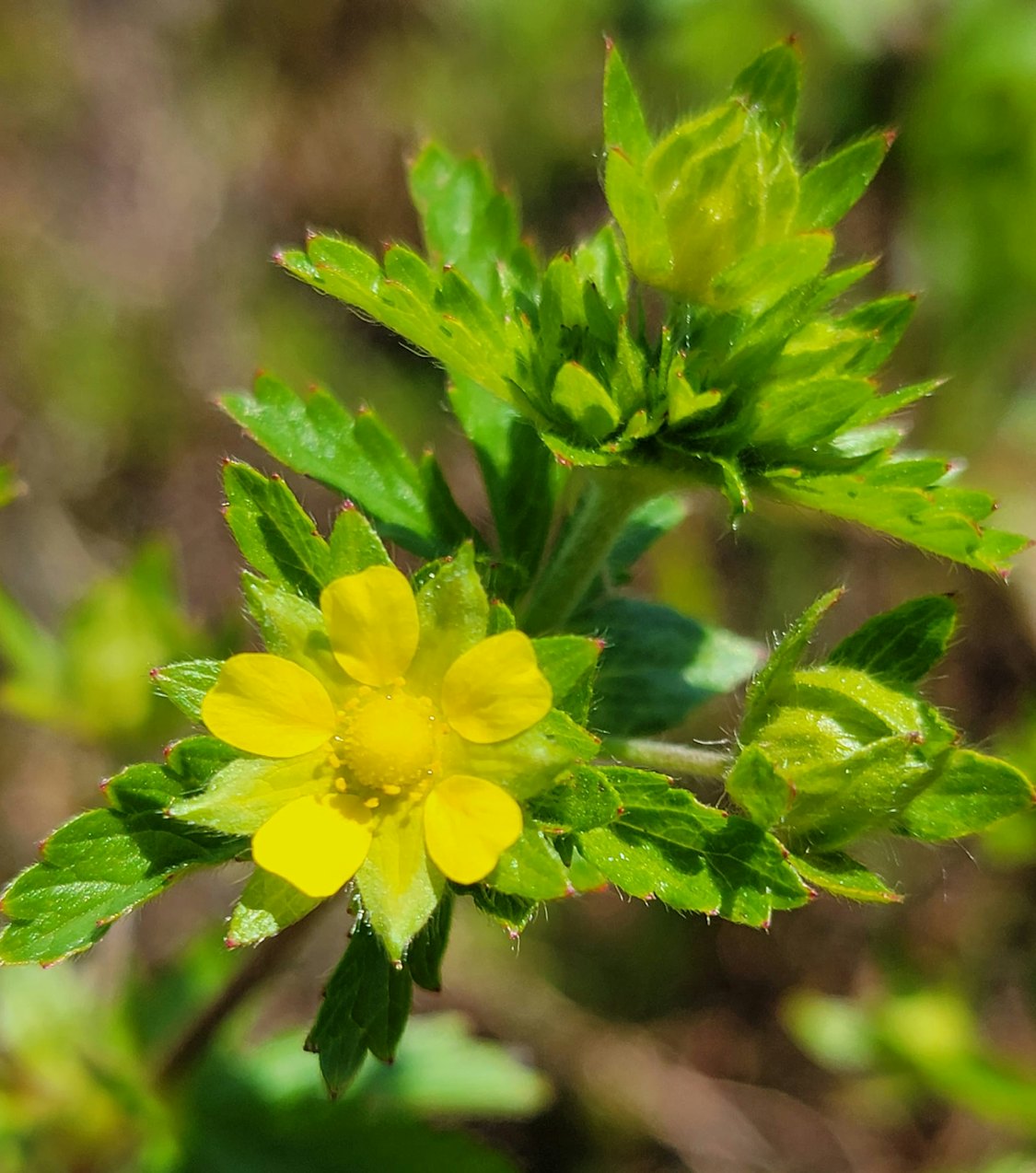
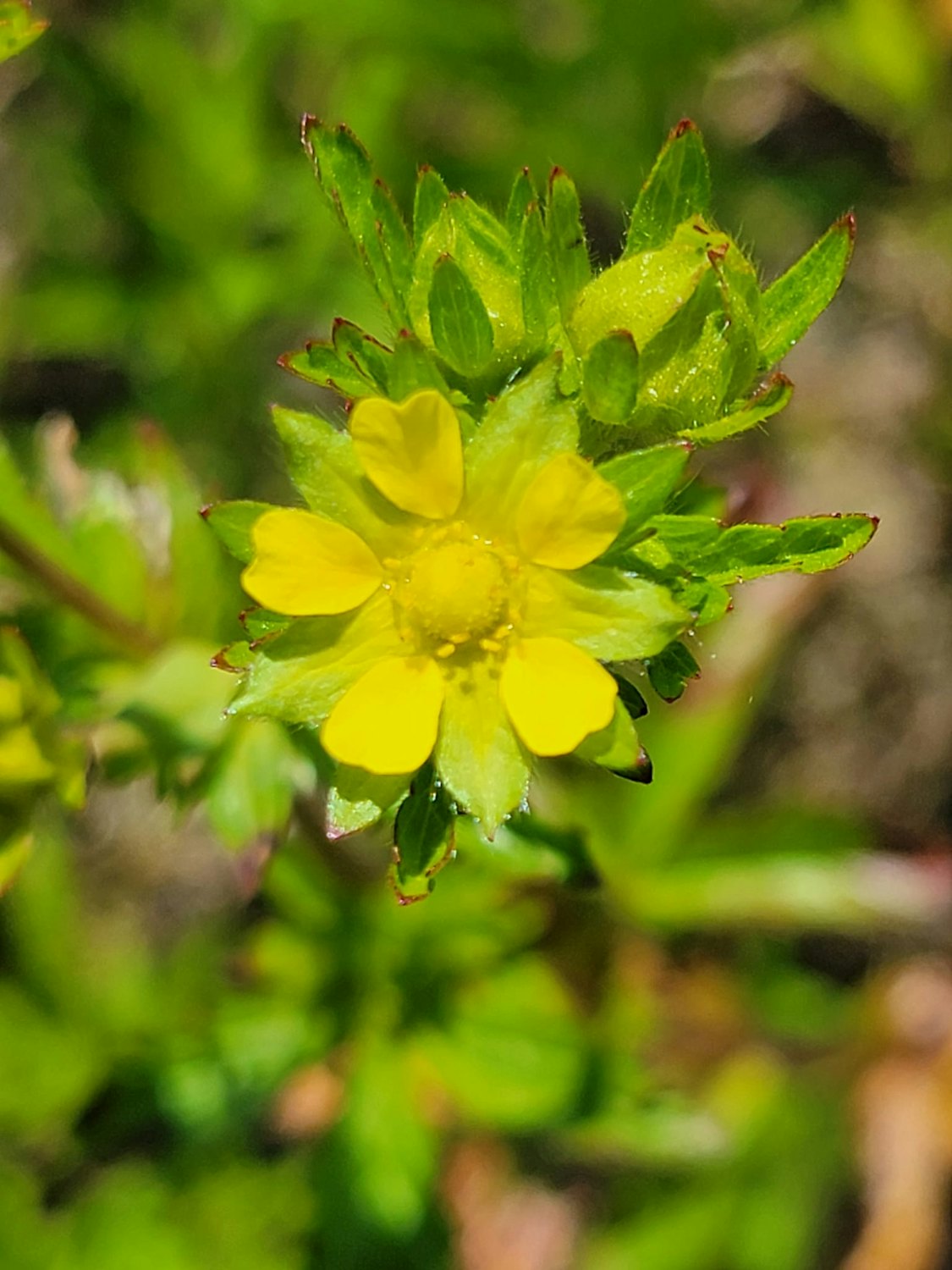
Soapwort, also known as Bouncing Bet, is another plant from Europe. I found in along the edge of the woods. I don’t know whether it causes trouble for our native wildflowers.
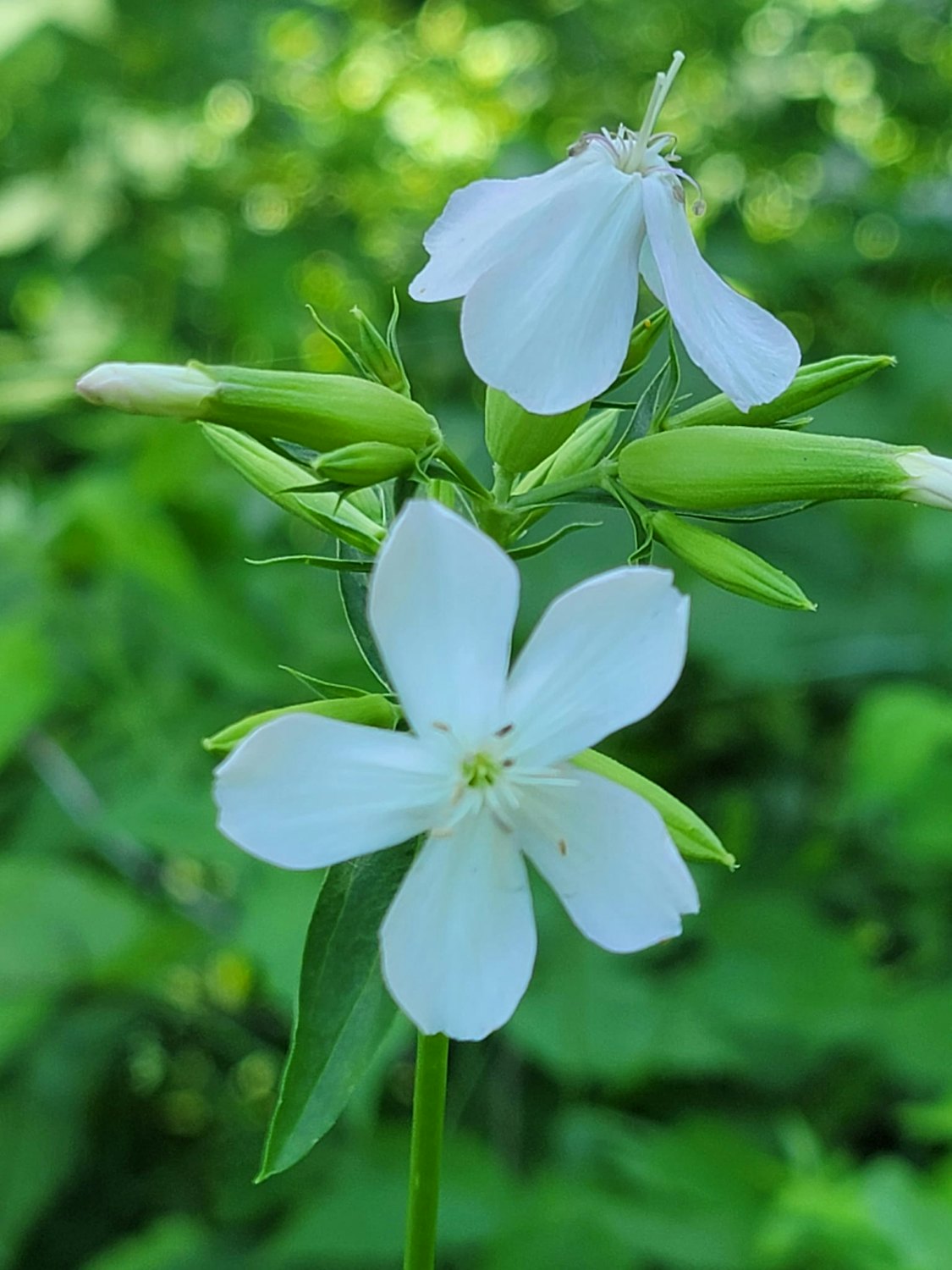
Another non-native is motherwort.
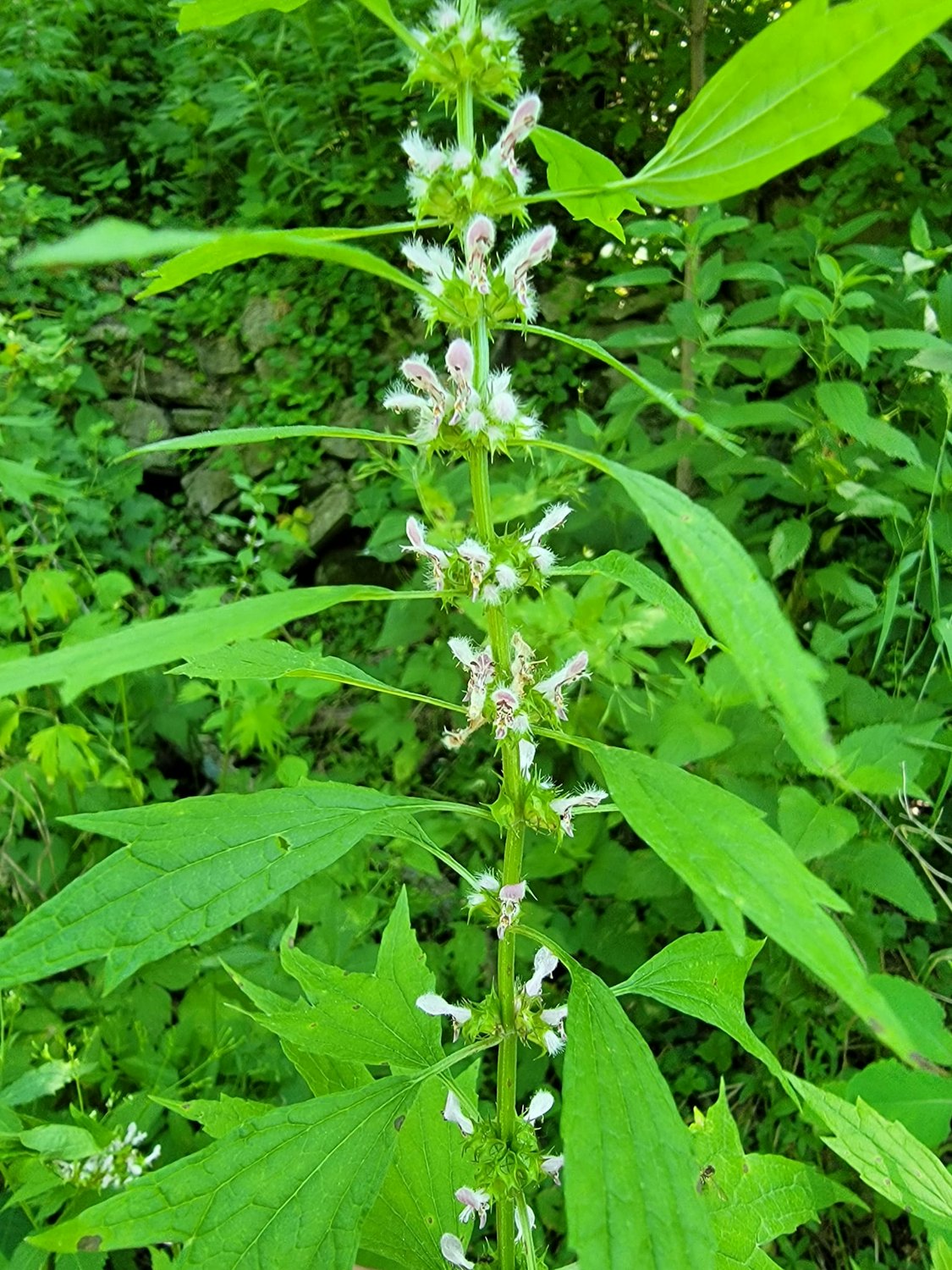
Other non-natives present were a few musk thistles. I find all the stages of a musk thistle fun to photograph.
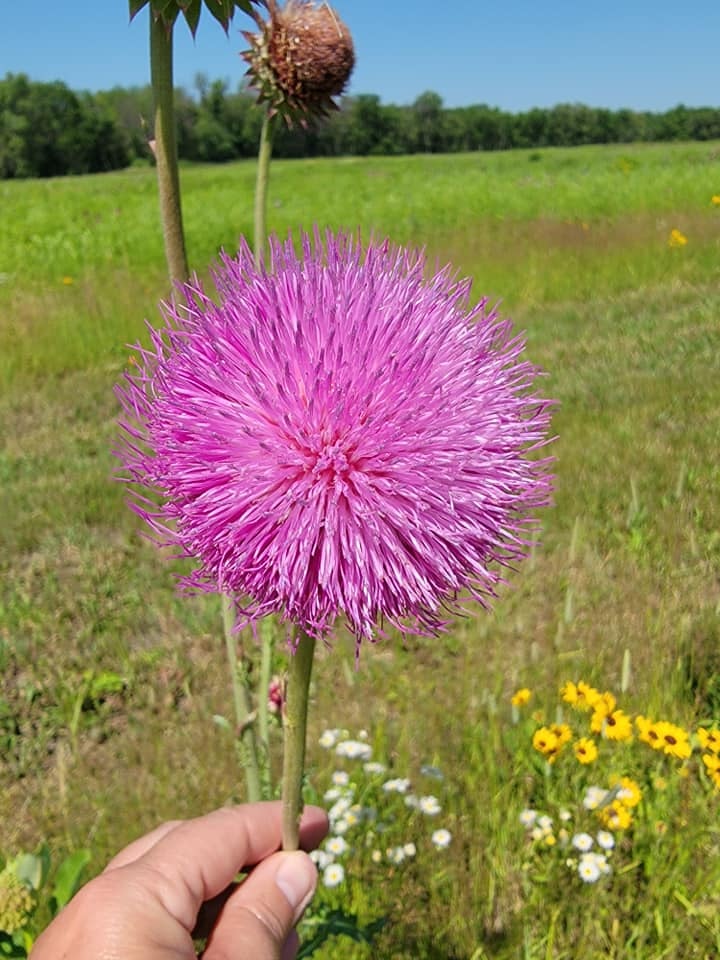
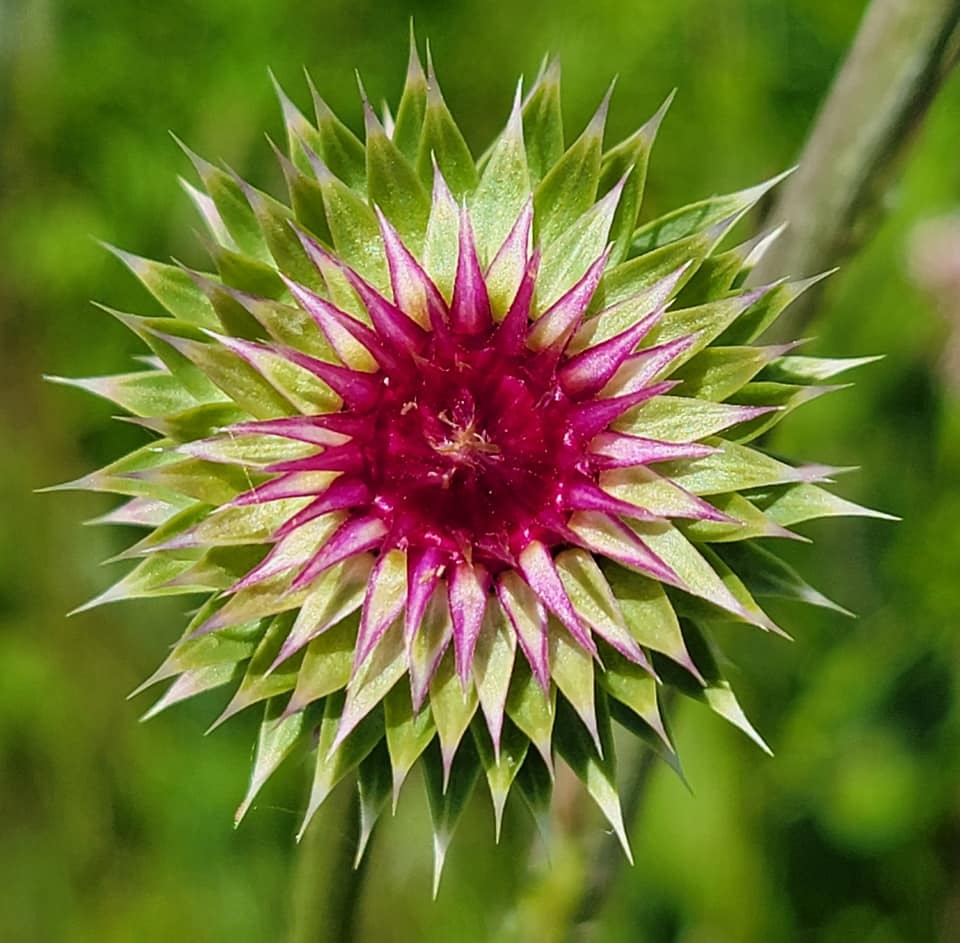
Lastly, I stopped in a big patch of common milkweed and dogbane to take some pictures of myself with my two dog companions, Prairie Dog and Meadow. Prairie Dog (in front) is a ham for picture taking. Meadow was more interested in the butterflies and dragonflies.
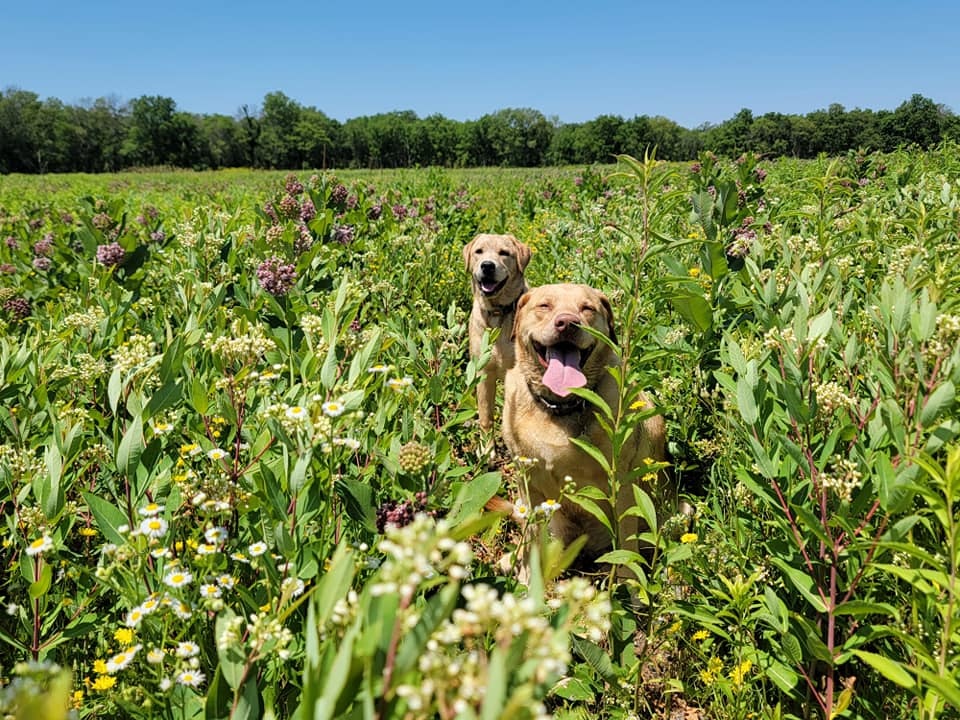
Meadow in the front:
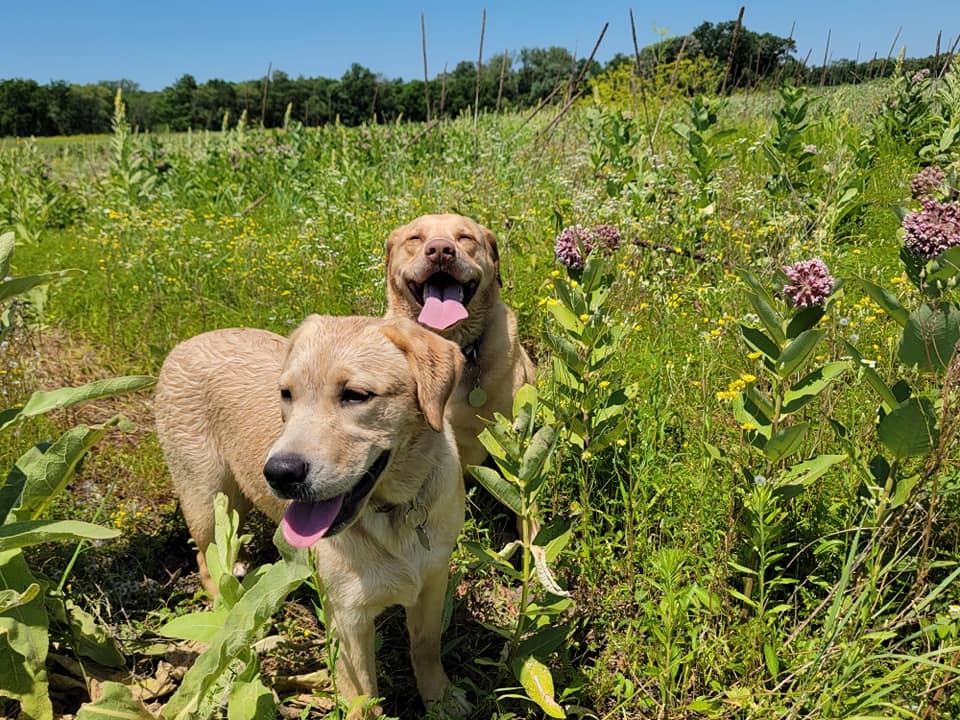
Back across the knee-deep creek to the truck we went. Surprisingly, I didn’t even notice my wet feet during the prairie walk. Maybe next time the creek will be lower. . .

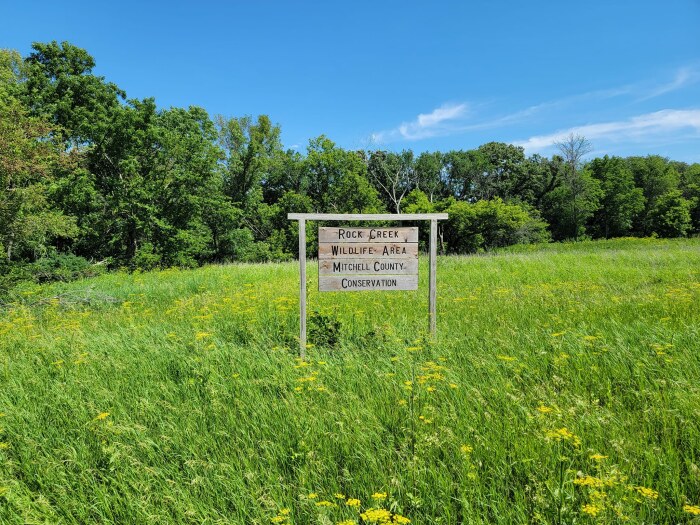
1 Comment
Fun post, thank you!
It’s so nice to see all these lovely flowers. I’m wondering if the Venus’ looking glass might possibly have survived on the planting site and shown up on its own, because I have rarely seen it in Iowa prairie plantings. But maybe newer seed mixes are more diverse.
Bouncing Bet is an invasive exotic and can indeed cause some trouble for Midwestern native plants. But to the best of my limited knowledge, it is not even nearly as big a problem as some other invasive exotics in Iowa. Crown vetch, garlic mustard, and Eurasian honeysuckle come immediately to mind, and the list goes on and on.
The impression I get is that if an Iowa natural area manager had Bouncing Bet as their biggest invasive problem, that manager would feel very fortunate compared to most of their peers. And might wear an expression similar to that of Prairie Dog:-).
PrairieFan Thu 7 Jul 3:02 PM